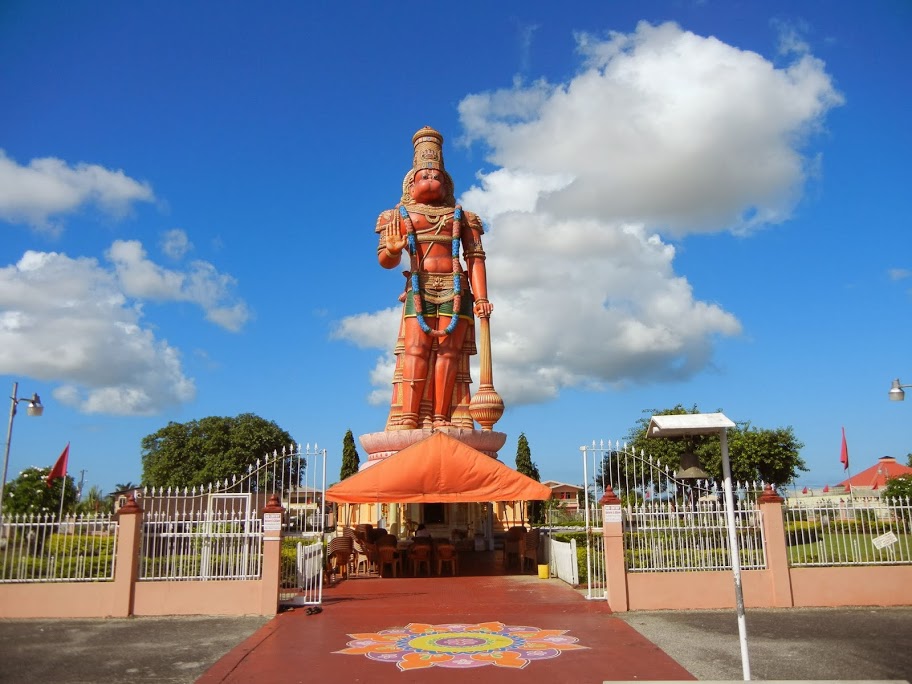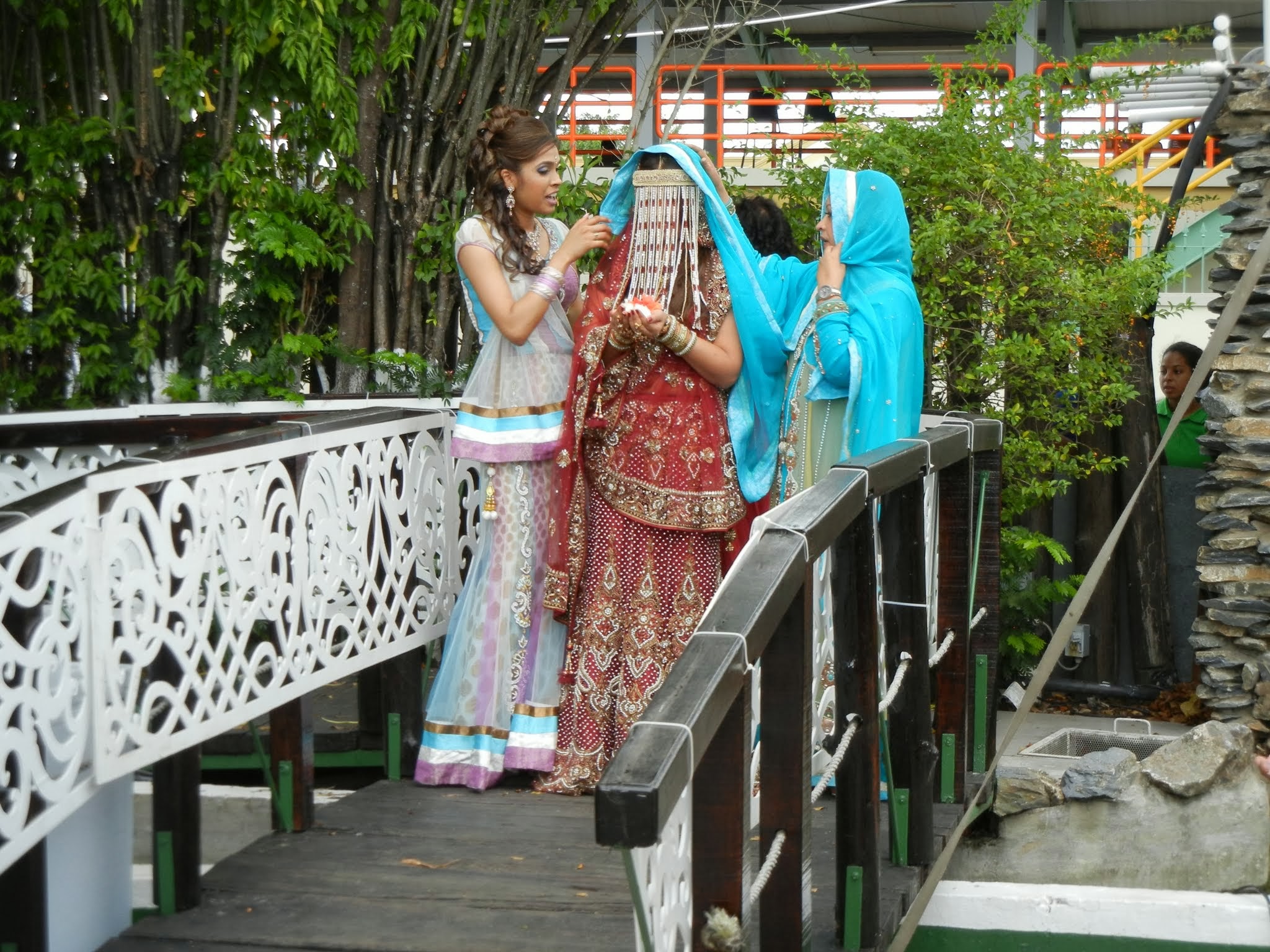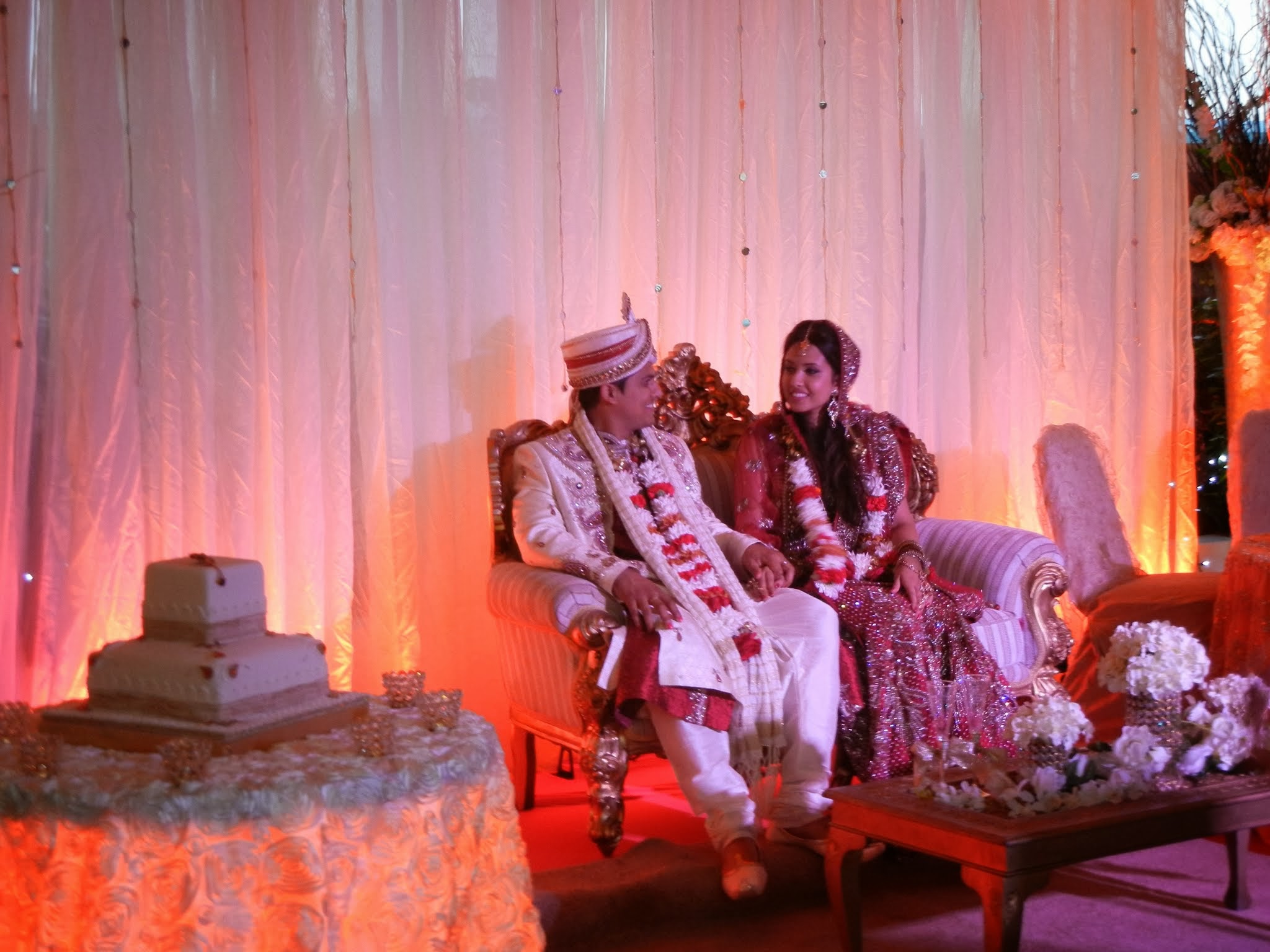When you get an invitation, during the cold part of the year, to come to a wedding in a warm place, you just cannot say no. Especially if that’s an invitation to a Hindu wedding that will take place on the island state of Trinidad and Tobago in the Caribbean Sea, there’s no second thought for a traveller like myself. So I left the cold December home and headed to Trinidad and Tobago. Not only was it my first time to attend a Hindu wedding, it was also my chance to visit three countries I’ve never been to before (Trinidad and Tobago, Grenada and Saint Vincent) and also meet my relatives from Canada.
Trinidad and Tobago is a country that is made up of two islands… the bigger, oil rich and industrialized Trinidad and the smaller Tobago with tourism being its main industry, thanks to gorgeous beaches and turquoise sea, white sand and palm trees. The islands are at the south of Lesser Antilles, not far from Venezuelan mainland. Trinidad is also the largest island of the Lesser Antilles and was named after the discoverer of the New World himself – by Christoph Columbus – because of the mountains with three tops on the south-eastern coast of the island. The smaller Tobago got its name because of tobacco that the natives were growing and smoking there.
If you visit Trinidad and Tobago, you should see the attractions on this list:
- Port of Spain is the national capital and also largest city on both islands, located on the north-western coast of Trinidad in the bay of Paria
- The Maracas beach is the most famous beach of Trinidad about an hour’s drive (on the twisting and mountainous road) from the capital on the northern coast
- Temple in the Sea in the place called Waterloo in the Paria bay, which is the biggest Hindu attraction of Trinidad and the product of a single man’s idea – Sewdassa Sadhu, who came to Trinidad in 1907 as a contractor and built a temple on shore, but was prosecuted and even locked up for it. Later in his life he built a temple in no man’s land – in the sea. His hard work, when the sea washed most of his work away daily, was finished by the Hindu community and the state after his death, and thus the temple we can see today was created.
- The statue of god Hanumana in Carapichaima on Trinidad standing at 26m is the tallest such statue outside of India, and is an important holy place where Hindus come to pray. If you make three circles around the state the wishes of believers are said to come true.
- Pigeon Point is the most famous beach of Tobago and also the only beach of the island that charges for entrance. For less than 3€ you can enjoy everything one of the most beautiful Caribbean beaches have to offer. And there’s even stands with »bake and shark«, a type of burger with shark meat.
- Fishing village Charlotteville to the north of Tobago is a dreamy place that lives from fishing and tourism. The hills touch the sea and the yellow sand beaches are full of simple shelters the people use. It offers one of the most picturesque sites of the island.

I’m describing a Ceribbean country, but I was invited there to a Hindu wedding. How does that add up? East Indies on West Indies? After the abolishment of slavery the plantations of Trinidad lost their workforce and the British (who controlled the island at the time) started using people from India as contractors and cheap labour force on Trinidad. After the contract was up, most people decided to stay on the islands and thus 40% of people on Trinidad originates from India. As some of them have, in the years after settlement (first people from India came to Trinidad areound 1850) accepted other religions, with some of them being Muslim not Hindu to begin with, there are about 20% of people on Trinidad today, that practice Hindu religion. Thus you can see hindu temples around the island and the most famous one is the one in the sea, and the island also boasts with the tallest statue of monkey god Hanumana (outside of India).
So I was attending a wedding of two Indians from Trinidad, who live in Canada. The groom (the nephew of my cousin’s wife) is Hindu and the bride was roman-catholic, thus there were two separate ceremonies, a Hindu and Catholic one. A Hindu wedding is one of the most important events in a life of a Hindu. It means the beginning of the married life and total devotion of partners to each other. Hindu weddings can take place at temples, in moder times they are more often under tents, where a temporary shrine is set up (mandap) and with eternal fire representing god as the witness to the event. The whole ceremony takes three days with the high point on the third day. On the first day there is the ritual cleansing of both partners, while on the second day the food for the feast is prepared. The main part of the event, however, starts with the arrival of the groom in traditional clothing (Dulaha) and the bride (Dulahin) on the third day. Accompanied by drums of tassa, each is accepted by the family members, expressing their honour. Pundit (the religious representative) guides the ritual (vivaha samsaras) where apart from the bride and groom, other relatives are involved also (from both sides of the family).

A Hindu wedding connects two individuals in spirit, soul, physically, emotionally and morally. The purpose is creating such a strong bond that after the wedding, even if two bodies are separated, they still form a harmonically bound unit. During the ritual of marriage of Dulahin and Dulaha they accept each other among other things also with prayer and offerings. The couple offers to fire specially prepared grains of rice (separately prepared on the evening before the wedding) that symbolize fertility and blessing. First the circle the holy fire seven times and each time with a different purpose. Each cycle is concluded by an offering of rice to the holy fire. First four cycles are led by Dulahin and represent her woes, to always be the first person on her husband’s side. By exchanging flower wreths that represent the merger of two bodies and souls into one, they proclaim their love and acceptance of each other. An important part of the ritual is also the Sindu Daan, when Dulaha under the scarf makes a special line with rouge (vermilijon) on the forehead of Dulahin. This sign – sindur – means they are be wed. After that rings are exchanged and the pundit maked the final prayers and blesses them with water. There’s also a lot of flower and rice throwing as well.

An interesting part of Hindu wedding is that they must not serve alcohol or meat at the same place that the ritual is taking place. So we were offered only alcohol free beverages (even the Champaign was without alcohol) and vegetables and fruit only, which were very spicy at that. There was rice on the plate, also roti (a special pancake that’s present with any meal on Trinidad), chickpeas, corn, mango, pumpkins, potatoes and more. There was no meet or alcohol, but you could get both at the parking lot nearby, you just weren’t allowed to take it into the tent – but you got them.
A Hindu wedding is a normal thing on Trinidad, but they were not until 1946, as they were prohibited for more than 100 years after the first contractors from India came to the island. I’ve travelled much of the world before, but I had to go to Trinidad and Tobago to attend a Hindu wedding and I was very happy to get this experience – a real first for me.